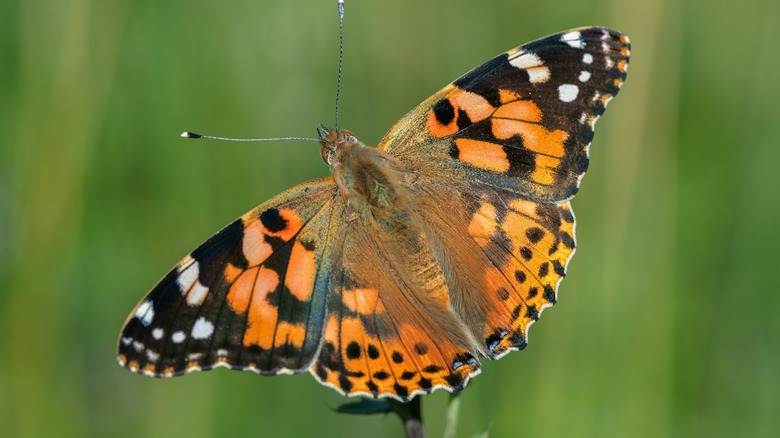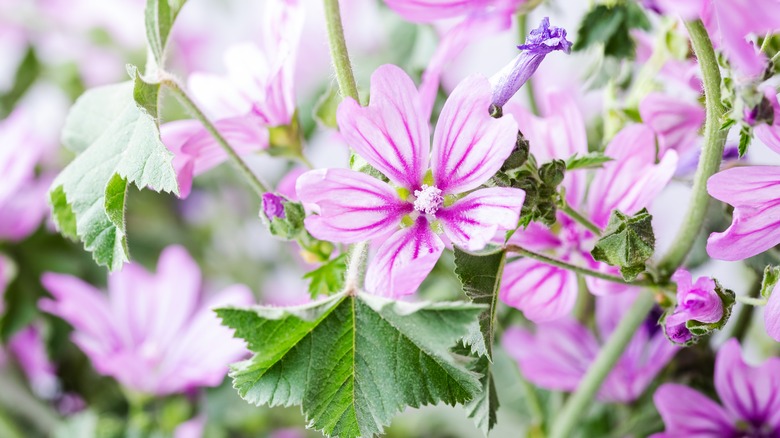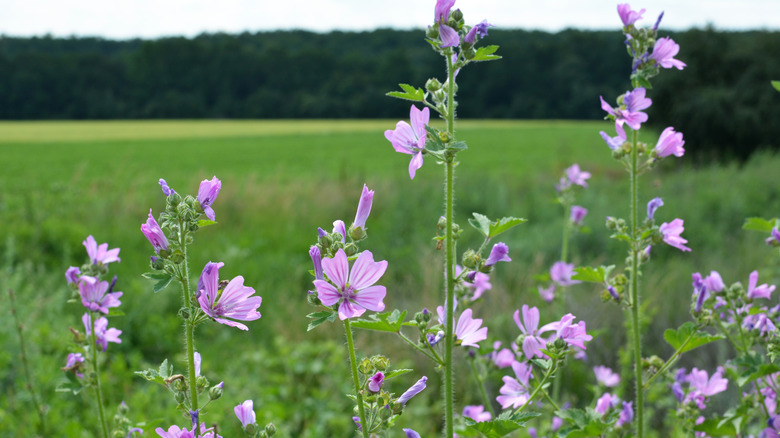The Flowering Weed Butterfly Lovers Will Want To Keep In Their Garden
If you are a butterfly lover, you will want to know all about common mallow (Malva sylvestris). Related to the hollyhock, it has many of the same characteristics including tall stalks covered with clusters of flowers. This is a gorgeous plant that some consider to be a weed due to its prolific self-seeding. But many gardeners grow it as a short-lived perennial, valuing it for its beautiful blooms that attract pollinators, including butterflies.
Common mallow has pretty flowers splashed with rose and purple on a white or pink background. The blossoms are shallow and have short nectar tubes, making them ideal for butterflies to feed on. They grow 2 to 4 feet in height and width. A charming cottage garden favorite, if they become weedy you can thin out unneeded or unwanted plants in the spring. Blooming from mid-summer to fall, these plants are resistant to most common garden pests and diseases.
How common mallow attracts butterflies
If you want to attract the largest number of butterflies, plant flowers that support the entire life cycle from egg to butterfly. One way to do that is to provide pollinator plants that provide nectar for adults to feed on. Common mallow is packed full of flowers that supply many butterfly species with the food they need to survive. But to support the population in your yard, you also want to consider encouraging them to lay eggs in your garden as well.
Painted lady butterflies in particular will lay their eggs directly on a mallow plant's leaves. This is called being a host plant. The leaves are a favorite food of the larvae, so when the eggs hatch they will have plenty of nourishment to help them along the path of becoming butterflies. If you are going to encourage this life cycle in your garden, know that there will be some damage to your plants after the eggs hatch. But mallow is fast-growing and resilient, and tolerating a little bit of damage early on will reward you with a garden full of happy butterflies.
How to care for common mallow
Common mallow is easy to care for and can grow with little help, like most weeds tend to do. Plant them in full sun for the best flowering. Also, butterflies only feed in the sun, so you will have the best chance of attracting them if they are planted in the appropriate spot. You can prolong the bloom on the plant if you cut back blossoms that have passed their prime. This practice is called deadheading in the garden, and allows the plant to put more energy into creating new blooms. It also prevents the plant from going to seed, which is what gives it its reputation as a weed.
This flower likes medium moisture and average soil, though it is very tolerant of many types, from sandy to clay. The soil does need to have good drainage, however. Sitting with wet feet can cause the plant's roots to rot and die. Give common mallow the right conditions and it will reward you by bringing butterflies and other pollinators into your garden all season long.


